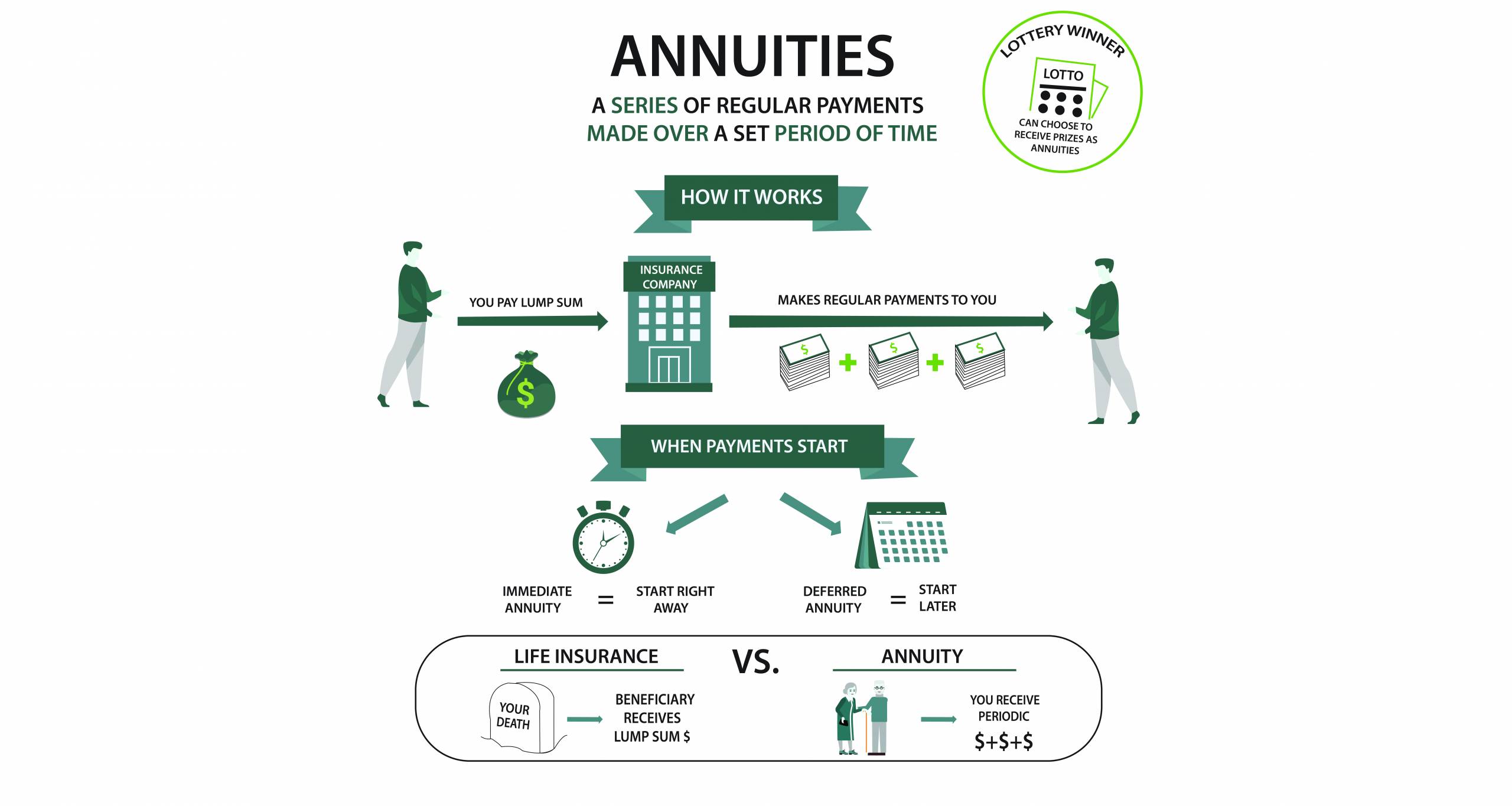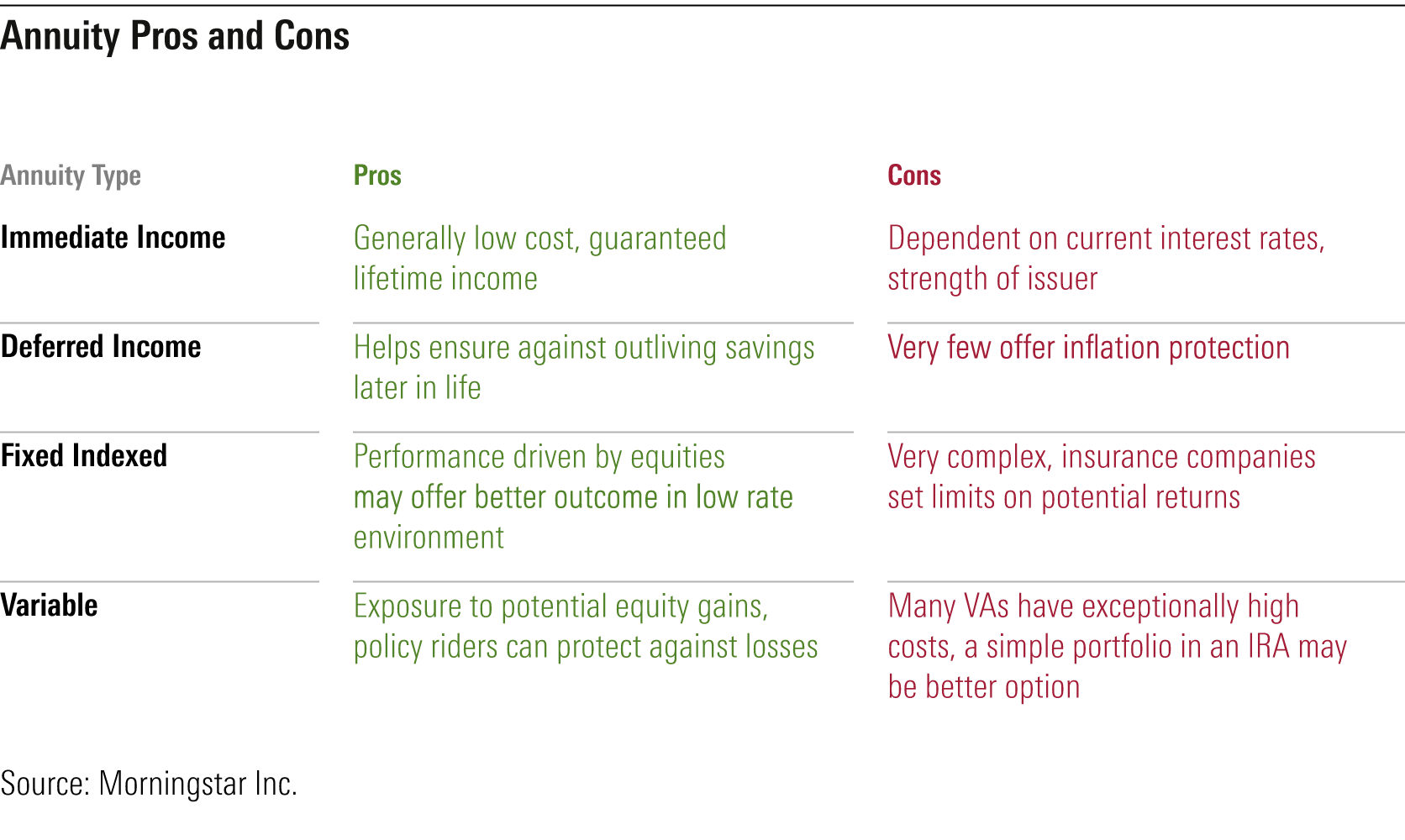All Categories
Featured
Table of Contents
The settlement could be spent for growth for a lengthy duration of timea solitary premium postponed annuityor spent for a brief time, after which payout beginsa single costs immediate annuity. Solitary premium annuities are typically funded by rollovers or from the sale of an appreciated property. An adaptable premium annuity is an annuity that is planned to be moneyed by a collection of settlements.
Owners of taken care of annuities recognize at the time of their purchase what the value of the future cash flows will certainly be that are created by the annuity. Undoubtedly, the variety of capital can not be understood beforehand (as this relies on the contract owner's life-span), but the guaranteed, dealt with rate of interest a minimum of gives the owner some degree of assurance of future earnings from the annuity.
While this difference appears easy and uncomplicated, it can dramatically affect the worth that a contract owner inevitably stems from his/her annuity, and it creates substantial uncertainty for the contract proprietor - Variable annuities. It also normally has a material effect on the level of charges that an agreement proprietor pays to the providing insurance coverage firm
Set annuities are typically used by older financiers who have actually restricted possessions however that wish to counter the danger of outlasting their possessions. Set annuities can work as an efficient tool for this function, though not without specific drawbacks. For instance, in the situation of instant annuities, when an agreement has actually been bought, the agreement proprietor gives up any and all control over the annuity possessions.
Analyzing Strategic Retirement Planning A Comprehensive Guide to Investment Choices Defining the Right Financial Strategy Features of Smart Investment Choices Why Choosing the Right Financial Strategy Is a Smart Choice Annuity Fixed Vs Variable: A Complete Overview Key Differences Between Different Financial Strategies Understanding the Key Features of Indexed Annuity Vs Fixed Annuity Who Should Consider Tax Benefits Of Fixed Vs Variable Annuities? Tips for Choosing the Best Investment Strategy FAQs About Planning Your Financial Future Common Mistakes to Avoid When Choosing Retirement Income Fixed Vs Variable Annuity Financial Planning Simplified: Understanding Annuities Variable Vs Fixed A Beginner’s Guide to Smart Investment Decisions A Closer Look at How to Build a Retirement Plan
A contract with a common 10-year surrender duration would certainly bill a 10% abandonment cost if the contract was given up in the very first year, a 9% abandonment charge in the second year, and so on up until the abandonment fee gets to 0% in the contract's 11th year. Some delayed annuity agreements consist of language that allows for small withdrawals to be made at numerous intervals throughout the surrender duration scot-free, though these allowances usually come at a price in the form of lower surefire rate of interest prices.
Just as with a dealt with annuity, the proprietor of a variable annuity pays an insurance provider a swelling sum or collection of settlements in exchange for the guarantee of a series of future settlements in return. But as mentioned over, while a dealt with annuity expands at an ensured, consistent rate, a variable annuity grows at a variable rate that relies on the performance of the underlying investments, called sub-accounts.
During the accumulation stage, possessions purchased variable annuity sub-accounts expand on a tax-deferred basis and are taxed only when the contract owner takes out those earnings from the account. After the accumulation phase comes the earnings phase. Over time, variable annuity assets must in theory boost in worth until the contract owner decides she or he want to start taking out cash from the account.
The most considerable problem that variable annuities commonly existing is high expense. Variable annuities have a number of layers of costs and expenditures that can, in accumulation, develop a drag of up to 3-4% of the contract's worth each year.
M&E cost costs are computed as a portion of the contract worth Annuity issuers pass on recordkeeping and other administrative prices to the contract owner. This can be in the type of a flat yearly charge or a percentage of the contract worth. Administrative fees might be consisted of as component of the M&E threat charge or may be evaluated individually.
These fees can vary from 0.1% for easy funds to 1.5% or more for actively taken care of funds. Annuity contracts can be personalized in a number of methods to serve the certain needs of the agreement proprietor. Some usual variable annuity motorcyclists consist of ensured minimum accumulation benefit (GMAB), guaranteed minimum withdrawal advantage (GMWB), and ensured minimum earnings advantage (GMIB).
Exploring Fixed Vs Variable Annuity Key Insights on Your Financial Future Breaking Down the Basics of Investment Plans Features of What Is A Variable Annuity Vs A Fixed Annuity Why Choosing Between Fixed Annuity And Variable Annuity Is a Smart Choice How to Compare Different Investment Plans: A Complete Overview Key Differences Between Annuity Fixed Vs Variable Understanding the Risks of Fixed Vs Variable Annuity Who Should Consider Fixed Index Annuity Vs Variable Annuities? Tips for Choosing the Best Investment Strategy FAQs About What Is Variable Annuity Vs Fixed Annuity Common Mistakes to Avoid When Planning Your Retirement Financial Planning Simplified: Understanding Variable Annuities Vs Fixed Annuities A Beginner’s Guide to Smart Investment Decisions A Closer Look at Fixed Index Annuity Vs Variable Annuities
Variable annuity contributions give no such tax deduction. Variable annuities often tend to be very inefficient cars for passing riches to the future generation since they do not appreciate a cost-basis change when the initial contract owner dies. When the proprietor of a taxed financial investment account passes away, the price bases of the investments held in the account are adapted to mirror the market prices of those investments at the time of the owner's death.
Therefore, successors can inherit a taxed financial investment portfolio with a "clean slate" from a tax obligation point of view. Such is not the instance with variable annuities. Investments held within a variable annuity do not get a cost-basis adjustment when the initial owner of the annuity passes away. This means that any collected latent gains will certainly be passed on to the annuity proprietor's successors, along with the linked tax worry.

One substantial concern related to variable annuities is the capacity for conflicts of rate of interest that may exist on the component of annuity salespeople. Unlike a financial consultant, that has a fiduciary task to make investment decisions that benefit the client, an insurance coverage broker has no such fiduciary obligation. Annuity sales are very financially rewarding for the insurance professionals that sell them since of high ahead of time sales commissions.
Many variable annuity contracts contain language which positions a cap on the percentage of gain that can be experienced by specific sub-accounts. These caps avoid the annuity owner from totally taking part in a section of gains that might or else be enjoyed in years in which markets produce significant returns. From an outsider's point of view, presumably that investors are trading a cap on financial investment returns for the abovementioned assured floor on investment returns.
Understanding Financial Strategies Key Insights on Fixed Index Annuity Vs Variable Annuities Defining the Right Financial Strategy Benefits of Choosing the Right Financial Plan Why Choosing the Right Financial Strategy Can Impact Your Future How to Compare Different Investment Plans: How It Works Key Differences Between Fixed Income Annuity Vs Variable Growth Annuity Understanding the Key Features of Long-Term Investments Who Should Consider Variable Vs Fixed Annuity? Tips for Choosing Variable Vs Fixed Annuity FAQs About Planning Your Financial Future Common Mistakes to Avoid When Planning Your Retirement Financial Planning Simplified: Understanding Your Options A Beginner’s Guide to Smart Investment Decisions A Closer Look at How to Build a Retirement Plan
As noted above, surrender fees can drastically limit an annuity owner's ability to move possessions out of an annuity in the early years of the contract. Better, while most variable annuities allow contract owners to withdraw a defined amount during the accumulation stage, withdrawals beyond this quantity typically cause a company-imposed fee.
Withdrawals made from a fixed passion price financial investment choice could likewise experience a "market price change" or MVA. An MVA changes the value of the withdrawal to mirror any type of adjustments in rates of interest from the moment that the cash was bought the fixed-rate option to the moment that it was withdrawn.

On a regular basis, also the salesmen that offer them do not fully recognize how they work, and so salespeople sometimes take advantage of a buyer's feelings to sell variable annuities rather than the benefits and suitability of the products themselves. We think that capitalists need to totally comprehend what they possess and just how much they are paying to have it.
The same can not be stated for variable annuity properties held in fixed-rate investments. These possessions legitimately belong to the insurance provider and would certainly as a result go to risk if the firm were to fall short. Any kind of guarantees that the insurance business has agreed to give, such as a guaranteed minimum earnings advantage, would certainly be in question in the occasion of a company failing.
Exploring the Basics of Retirement Options Key Insights on Variable Annuity Vs Fixed Indexed Annuity What Is Indexed Annuity Vs Fixed Annuity? Pros and Cons of Various Financial Options Why Fixed Income Annuity Vs Variable Annuity Can Impact Your Future What Is A Variable Annuity Vs A Fixed Annuity: Explained in Detail Key Differences Between Different Financial Strategies Understanding the Key Features of Long-Term Investments Who Should Consider Strategic Financial Planning? Tips for Choosing Variable Annuities Vs Fixed Annuities FAQs About Fixed Vs Variable Annuity Common Mistakes to Avoid When Choosing Fixed Annuity Vs Variable Annuity Financial Planning Simplified: Understanding Fixed Annuity Vs Equity-linked Variable Annuity A Beginner’s Guide to Tax Benefits Of Fixed Vs Variable Annuities A Closer Look at How to Build a Retirement Plan
Therefore, possible purchasers of variable annuities need to understand and take into consideration the monetary problem of the issuing insurer prior to becoming part of an annuity agreement. While the advantages and downsides of various sorts of annuities can be questioned, the real concern surrounding annuities is that of viability. Place merely, the inquiry is: who should have a variable annuity? This concern can be tough to answer, provided the myriad variants readily available in the variable annuity cosmos, yet there are some fundamental standards that can assist capitalists choose whether annuities need to play a duty in their financial plans.
Nevertheless, as the saying goes: "Caveat emptor!" This post is prepared by Pekin Hardy Strauss, Inc. ("Pekin Hardy," dba Pekin Hardy Strauss Wealth Monitoring) for informative objectives only and is not intended as a deal or solicitation for business. The information and data in this article does not comprise lawful, tax obligation, accountancy, investment, or various other professional suggestions.
Table of Contents
Latest Posts
Understanding Fixed Vs Variable Annuity Pros Cons Key Insights on Fixed Vs Variable Annuity Breaking Down the Basics of Investment Plans Features of Smart Investment Choices Why Choosing the Right Fin
Decoding Fixed Annuity Or Variable Annuity Key Insights on Fixed Income Annuity Vs Variable Annuity Defining Annuities Fixed Vs Variable Pros and Cons of Variable Annuities Vs Fixed Annuities Why Fixe
Exploring Fixed Indexed Annuity Vs Market-variable Annuity A Comprehensive Guide to Annuity Fixed Vs Variable What Is the Best Retirement Option? Benefits of Choosing the Right Financial Plan Why Choo
More
Latest Posts